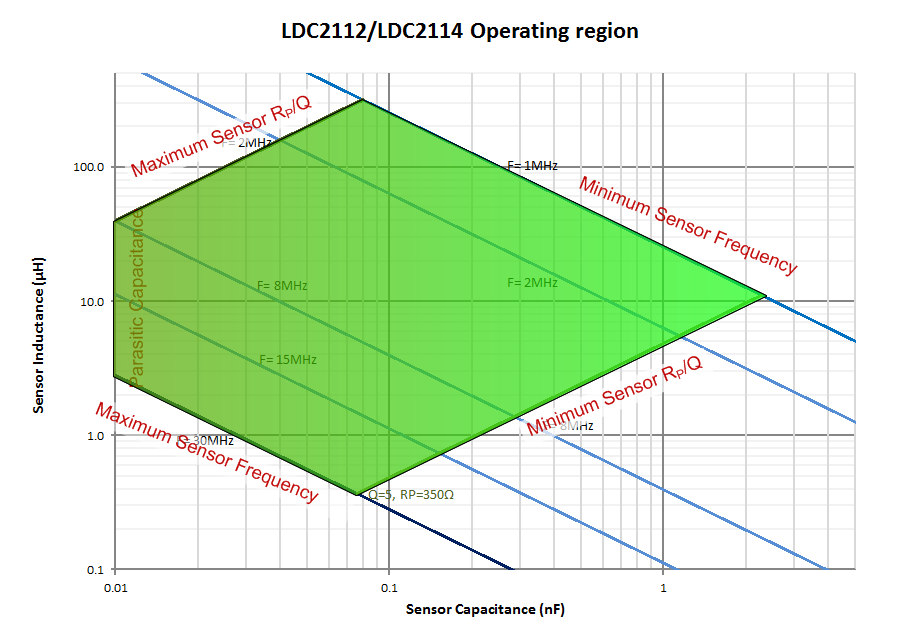SNOA961A February 2017 – February 2023 LDC2112 , LDC2114 , LDC3114 , LDC3114-Q1
- Inductive Touch System Design Guide for HMI Button Applications
- 1Mechanical Design
- 2Sensor Design
- 3Summary
- 4Revision History
2.3 LDC211x/LDC3114 Design Boundary Conditions
The LDC2112 and LDC2114 are high resolution Inductance-to-Digital Converters (LDCs) which internal algorithms can detect inductance shifts corresponding to button presses on metal or other surfaces. These devices require that the attached sensors meet the following parameters:
- 1 MHz ≤ fSENSOR ≤ 30 MHz
- 350 Ω ≤ RP ≤ 10 kΩ
- 5 ≤ Q ≤ 30
The LDC3114 and LDC3114-Q1 are similar devices but require the sensor frequency to be between 5 MHz and 30 MHz and offer slightly different functionality such as the ability to access the raw data before the internal algorithm if desired. If the sensor parameters are not within these specifications, the LDC may not be able to measure inductance shifts, and as a result will not indicate Inductive Touch events. #T4726003-55 show these restrictions, which is derived from GUID-6AC968E3-0011-4198-B542-46F8F31E3EDE.html#X6785.
 Figure 2-3 LDC2112/LDC2114 Operating Region
Figure 2-3 LDC2112/LDC2114 Operating RegionUse #GUID-46511A1B-6819-4475-B37F-FD600103DBCD to calculate the minimum sensor frequency on the top-right boundary:

Use #GUID-F26F3761-4BC7-4561-A20B-E9F10E6F6080 to calculate the maximum sensor frequency on the bottom-left boundary:

On the left, if the sensor capacitance is too small, then parasitic capacitance effects may degrade the sensor operation. While this boundary is shown at 10 pF, some systems may encounter issues even with larger sensor capacitances. In general, TI recommends to use a sensor capacitance larger than 22 pF.